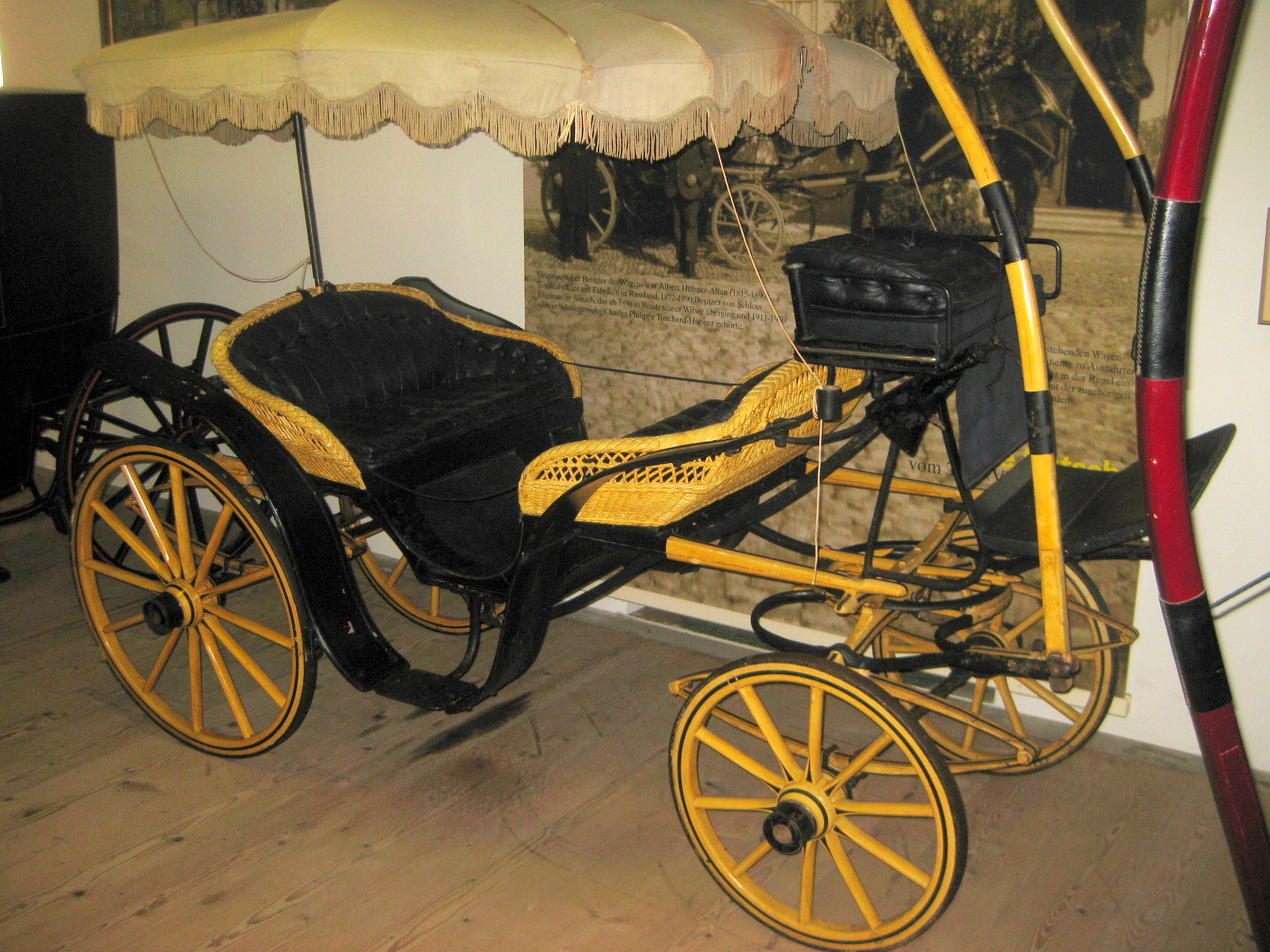Vis-à-vis (carriage) on:
[Wikipedia]
[Google]
[Amazon]
 A vis-à-vis is a
A vis-à-vis is a
 A vis-à-vis is a
A vis-à-vis is a carriage
A carriage is a two- or four-wheeled horse-drawn vehicle for passengers. In Europe they were a common mode of transport for the wealthy during the Roman Empire, and then again from around 1600 until they were replaced by the motor car around 1 ...
in which the passengers sit face to face with the front passengers facing rearward and the rear passengers facing forward. The term comes from the French ''vis-à-vis'', meaning face to face.
These carriages are still commonly made by Amish
The Amish (, also or ; ; ), formally the Old Order Amish, are a group of traditionalist Anabaptism, Anabaptist Christianity, Christian Christian denomination, church fellowships with Swiss people, Swiss and Alsace, Alsatian origins. As they ...
carriage makers in the midwestern United States
The Midwestern United States (also referred to as the Midwest, the Heartland or the American Midwest) is one of the four census regions defined by the United States Census Bureau. It occupies the northern central part of the United States. It ...
. Also in the Western world
The Western world, also known as the West, primarily refers to various nations and state (polity), states in Western Europe, Northern America, and Australasia; with some debate as to whether those in Eastern Europe and Latin America also const ...
, the vis-a-vis is the most common type of carriage style used to cart tourists and leisure seekers in downtown urban settings.
Passengers sit back-to-back on dos-à-dos carriages.
Examples
The following types of carriage had vis-à-vis seating: * Barouche * Berline *Landau
Landau (), officially Landau in der Pfalz (, ), is an autonomous (''kreisfrei'') town surrounded by the Südliche Weinstraße ("Southern Wine Route") district of southern Rhineland-Palatinate, Germany. It is a university town (since 1990), a long ...
Automobiles
There were vis-à-vis automobiles in the early history of motoring. These were driven from the forward-facing rear seat, with front passengers sitting ahead of the steering controls and facing the driver. , page=484 Passengers in the front seat would obstruct the vision of the driver in the rear seat, and the style fell out of favour before 1905.See also
*Horse-drawn vehicle
A horse-drawn vehicle is a piece of equipment pulled by one or more horses. These vehicles typically have two or four wheels and were used to carry passengers or a load. They were once common worldwide, but they have mostly been replaced by auto ...
* Car body styles
References
Carriages Car body styles {{vehicle-stub